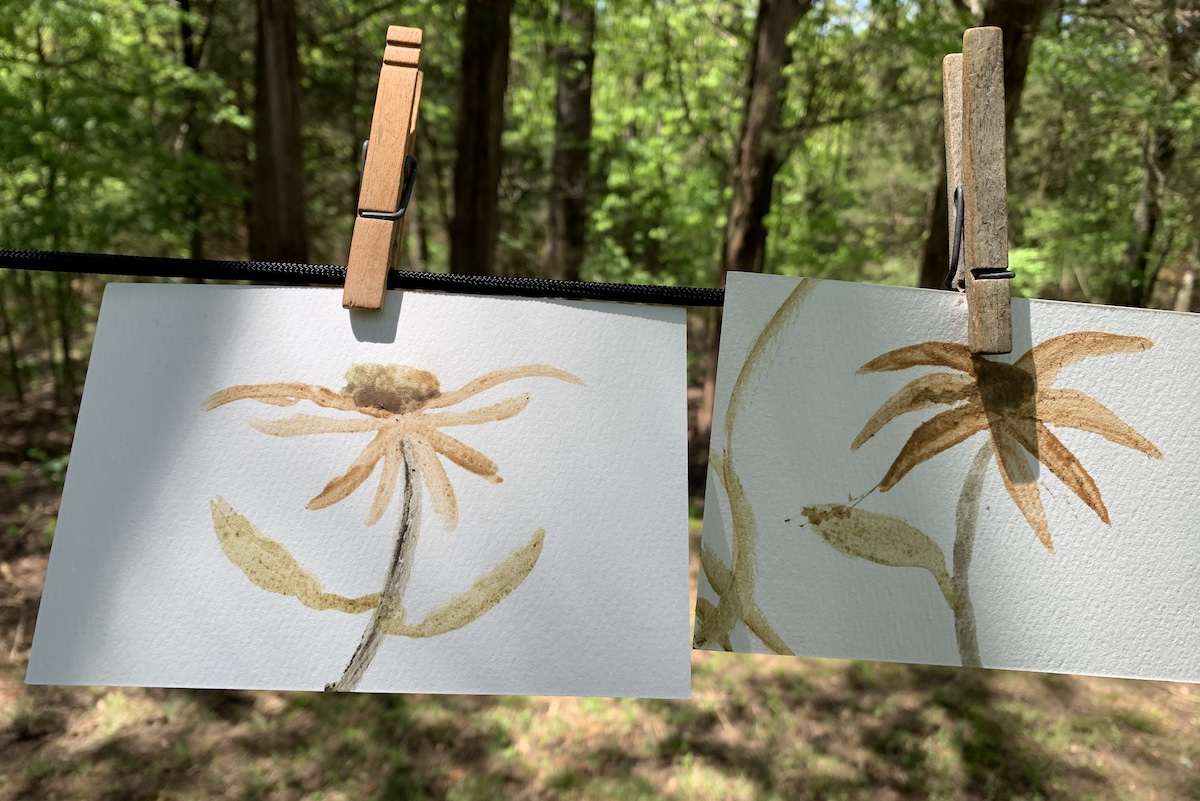
Paint with the Prairie entails using glacial sediments as watercolor paints to create a paint-by-number template of a coneflower—a reminder of Illinois’ glacial legacy. All photos courtesy of the author.



Paint with the Prairie entails using glacial sediments as watercolor paints to create a paint-by-number template of a coneflower—a reminder of Illinois’ glacial legacy. All photos courtesy of the author.
Have you ever thought about what lies beneath your feet—the soil, rock and water that make up the ground we live on? Scientists call this the Critical Zone, and it’s the thin layer of Earth that supports all life. Understanding it is key to protecting Illinois’ rivers, farms and ecosystems—but it’s not just for scientists in lab coats. Thanks to a decade-long collaboration funded by the National Science Foundation, cutting-edge research on Illinois soils and landscapes is now making its way into classrooms and the broader community.

At the heart of this effort is a team of scientists from the Prairie Research Institute, the University of Illinois, and other Midwest powerhouses such as Purdue, Northwestern and the University of Nebraska-Omaha. These researchers are studying intensively managed landscapes across Illinois to understand how soil, water and biology interact. From tracking carbon in the soil to mapping nutrient flows, their work helps predict the health of our rivers, forests and farmland.
The National Great Rivers Research and Education Center (NGRREC) joined the project in its final five years, bringing an essential ingredient: education. Erica Doerr, an environmental educator at NGRREC with a geology background, has worked to translate this complex science into lessons and programs that make sense for students, teachers and the general public. She has developed new curricula connecting Critical Zone research to relevant environmental issues faced in Illinois today, including the effects of tile drainage and modern agricultural practices on soils and watersheds.

One of the most popular activities to emerge from this collaboration is Paint With the Prairie: Soil, Story, and Stewardship. In partnership with the Illinois Geological Survey, core samples of glacial sediments collected from around the state were obtained. These sediments, buried beneath the Earth since the time of the glaciers, tell the story of Illinois’ geological history and the formation of the fertile soils that made the state an agricultural frontier. Understanding these “parent materials” is key to appreciating how special—and fragile—our soils really are.
Paint With the Prairie has traveled to multiple community events, including Water Festival, Earth Stewardship Day and the Madison County Fair, teaching people of all ages about soil through hands-on art. The glacial sediments have been transformed into watercolor paints and used to create a paint-by-number template of a coneflower—a reminder of Illinois’ glacial legacy, the prairies that once dominated the landscape and the soils that developed over millennia. By connecting these components, participants gain a deeper appreciation for the soils that sustain ecosystems, agriculture and communities today.
Beyond community events, NGRREC has hosted multiple educator trainings throughout Illinois and the nation, including the first-ever Critical Zone in the Classroom Workshop, designed to bring these new lessons into schools. Through these programs, students and educators alike see that the Critical Zone isn’t some distant, abstract concept—it’s the living soil beneath our feet, shaping the water we drink, the food we grow and the landscapes we love.
By combining interdisciplinary science, innovative education, and hands-on experiences, this project is creating a model for science outreach that other states could emulate. So next time you dig in your garden, hike through a forest or look at a nearby river, remember: there’s a whole world underfoot, and thanks to scientists and educators, that world is now within reach for all of us.
Contact Erica Doerr if you have questions regarding the Critical Zone curriculum or visit NGRREC.
Erica Doerr is a Geologist and Environmental Educator at the National Great Rivers Research and Education Center (NGRREC), where she develops and leads educational programs and public engagement initiatives that connect people to the natural world. With a passion for hands-on learning and mentoring students, she is dedicated to making science accessible and fostering connections between research and the public. She earned her B.A. in Earth Science with a minor in Anthropology from Central Missouri University and her M.S. in Geology from the University of Arkansas–Fayetteville.
Submit a question for the author
Question: Hello Erica,
It’s so remarkable, the work you’ve put into creating this! How cool, that you were able to lead and direct all those various different collaborations with environmental groups and professionals. Coming together to build such an assessable hands on craft took impressive innovation on your part!
Educators really do need exactly THIS, a fun, new, innovative project for all ages that shine a light on relationships between earths soil, water, and food. As a mother that’s worked in several schools, I also really appreciate that you have brought creativity and art into Science class. Art class is not guaranteed to k-12 students year after year anymore! Just like old time practices of planting combinations of plants together to benefit each other, doing art along with environmental studies is such an engaging way to put actual earth and water onto paper.
I’m just so impressed. We are looking forward to this curriculum being used as broadly as it’s reach can go.
Good luck inspiring others to have fun learning science!
Bravo. Well Done.
Audra Galliano
A mom in downstate, rural Illinois